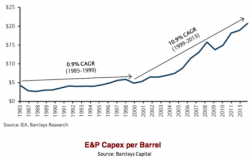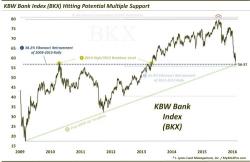What Energy Bankers Are Really Saying: "We Are Looking To Save Ourselves Now"
There are three important observations in the latest "Things We've Learned This Week" weekly report from Credit Suisse's James Wicklund.
There are three important observations in the latest "Things We've Learned This Week" weekly report from Credit Suisse's James Wicklund.

Long before the saying "BTFD" emerged on Wall Street as a result of some $13 trillion in central bank liquidity injections (now rapidly unwinding as a result of the failure off the Petrodollar and the so-called Quantitative Tightening) which made corrections impossible if not yet illegal, the phenomenon of buying sharply falling stocks had a different name on Wall Street: "catching a falling knife" (alternatively "dash for trash").

Submitted by Gail Tverberg via OilPrice.com,
What is ahead for 2016? Most people don’t realize how tightly the following are linked:
1. Growth in debt2. Growth in the economy3. Growth in cheap-to-extract energy supplies4. Inflation in the cost of producing commodities5. Growth in asset prices, such as the price of shares of stock and of farmland6. Growth in wages of non-elite workers7. Population growth
With Q4 earnings season drawing to a close, here is a quick recap of the key issues facing corporate CEOs and CFOs based on their conference calls as summarized by Goldman's David Kostin: 1) Company managements forecast positive US GDP growth in 2016, in contrast with investor concerns of a potential recession. However, global growth prospects appear grim, particularly within commodity-exposed nations. (2) Strong domestic consumer demand persists amid industrial weakness. (3) Several firms announced large or accelerated share repurchase programs in 2016.

The buzz surrounding the late-afternoon bounce in stocks yesterday revolved around the news that Jamie Dimon was buying 500,000 shares of JPMorgan Chase stock. As Dana Lyons notes,